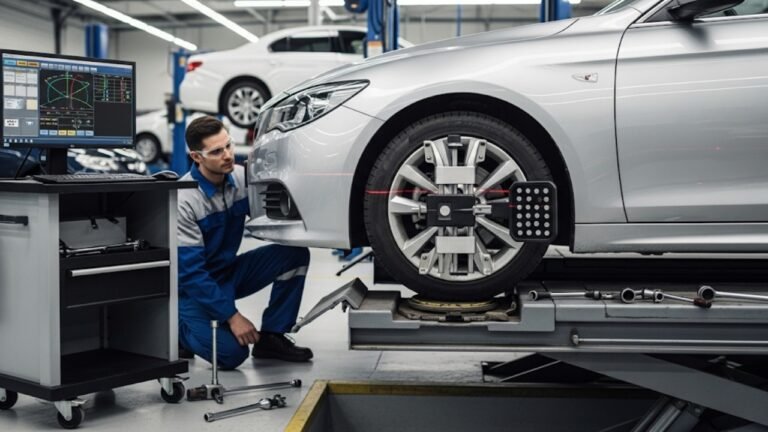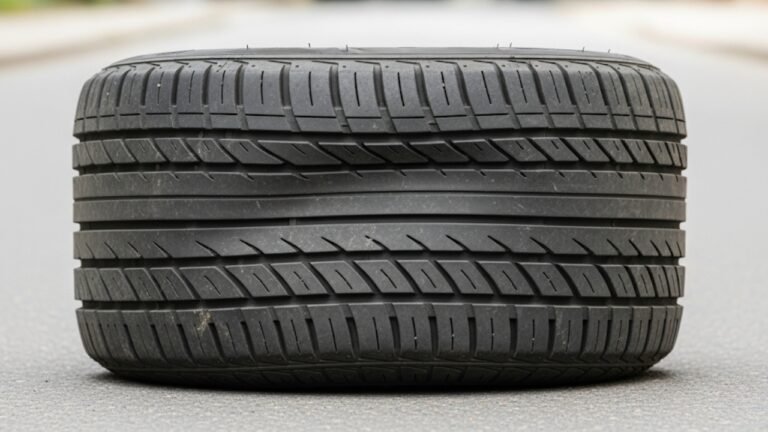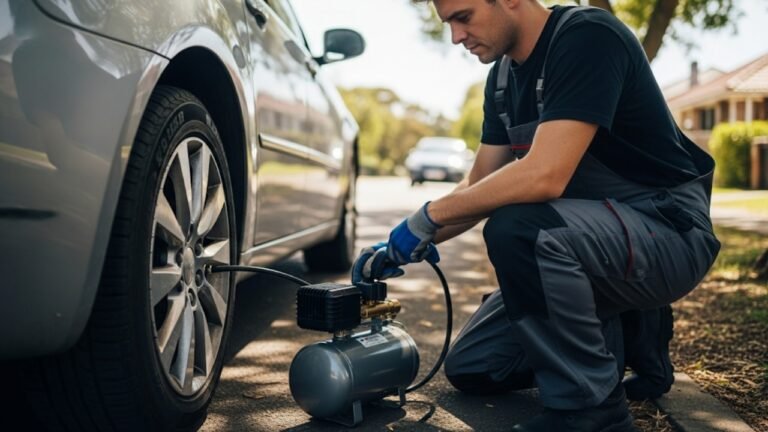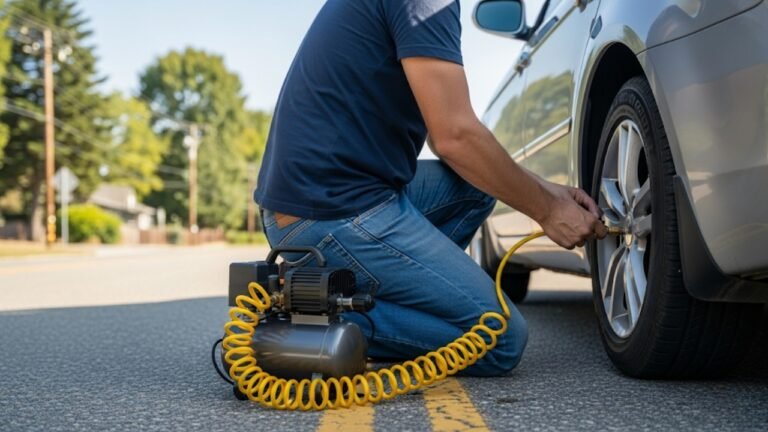Why Is My Tire Pressure Going Up and Down?
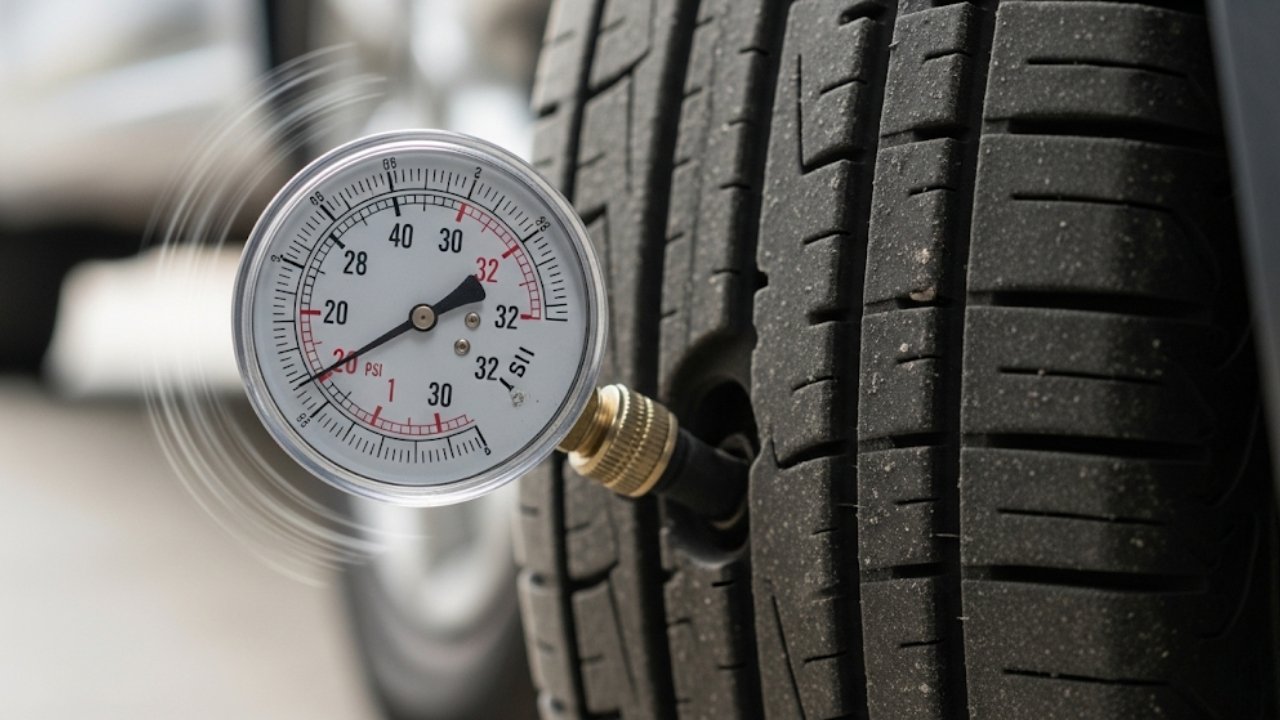
It was a chilly morning in late November. I was late for work, coffee in hand, and I hopped into my car hoping for a smooth ride. But there it was—that annoying tire pressure warning light blinking back at me. “Not again,” I muttered. A week ago, it had turned on too, only to disappear the next day like nothing ever happened.
Sound familiar?
If you’ve ever wondered, “why is my tire pressure going up and down?”, you’re definitely not alone. It’s one of the most puzzling and frustrating things that car owners face—especially during seasonal changes. Some days your tire pressure seems perfect, other times it drops or rises without any clear reason. But this isn’t just some automotive mystery. There are real, science-backed reasons behind this.
Let’s dive into the emotional rollercoaster of tire pressure—and how you can get off the ride with more peace of mind.
1. The Impact of Temperature: Heat and Cold Play Tricks
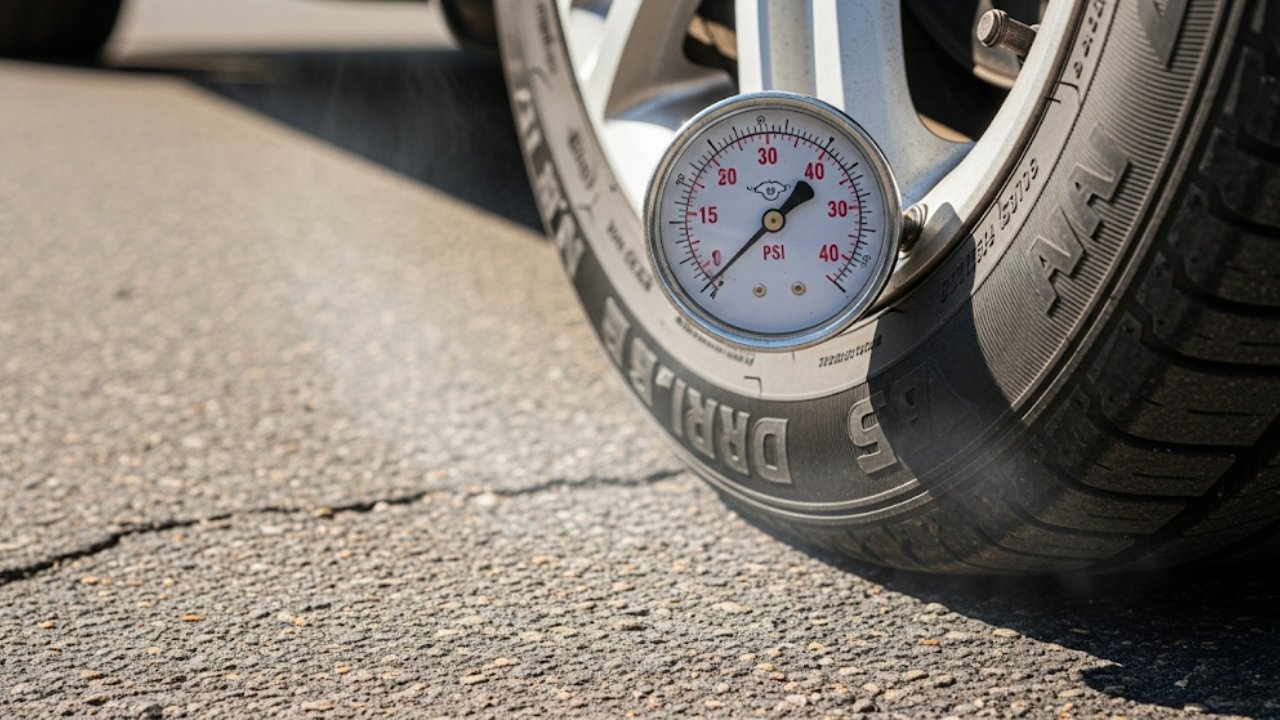
When the temperature drops, air contracts. That means the pressure inside your tires lowers too. For every 10°F drop in temperature, your tires can lose around 1 PSI (pound per square inch). In colder months, this often causes the TPMS (Tire Pressure Monitoring System) light to come on.
On the flip side, when the temperature rises—especially during summer afternoons—air expands. So your tire pressure may go up a few PSI without you even driving the car.
It’s like your tires are breathing in and out with the seasons.
Quick Tip:
Check your tire pressure first thing in the morning, before the car is driven. This gives you the most accurate reading.
Here’s a quick table showing how temperature impacts tire pressure:
| Temperature Change | Approx. PSI Change |
|---|---|
| +10°F | +1 PSI |
| -10°F | -1 PSI |
| +30°F | +3 PSI |
| -30°F | -3 PSI |
This alone answers a good chunk of the question: why is my tire pressure going up and down? It’s not your car going rogue—it’s just science doing its thing.
2. Driving Style: Speed, Distance, and Friction Matter
Now let’s talk about how your own driving behavior affects tire pressure. Have you ever taken a long road trip and then noticed your tire pressure had increased?
That’s not a coincidence.
As you drive, the friction between the tire and the road generates heat. This heat causes the air inside your tires to expand, which naturally raises the pressure. It’s a temporary change, but still enough to throw off your readings—especially if you’re checking pressure right after a long drive.
Let’s break it down simply:
-
City driving: Short trips don’t raise pressure much.
-
Highway driving: Long distances + high speeds = pressure increase.
-
Stop-and-go traffic: Heat builds slowly but can still affect PSI.
Bullet points to keep in mind:
-
Always check tire pressure when tires are cold, ideally after the car has been parked for 3+ hours.
-
Avoid inflating tires based on hot readings, or you might overinflate.
-
Over time, repeated long-distance driving can slowly increase your “average” pressure baseline.
So again, when you’re wondering, why is my tire pressure going up and down, think about your last few trips. Were you speeding? Driving on hot asphalt? These behaviors can make your tires swell like a balloon on a summer day.
3. Slow Leaks: The Silent Tire Saboteurs
Here’s where things get a little sneakier.
Not every drop in tire pressure is from temperature or driving patterns. Sometimes, it’s from slow leaks that take weeks or even months to become noticeable. Think of it like a tiny hole in a soda can—it doesn’t make a sound, but eventually, you’ll notice it’s flat.
Common causes of slow leaks:
-
Nails or screws stuck in the tread
-
Cracked valve stems
-
Bead leaks where the tire meets the rim
-
Aging rubber or dry rot
These leaks are frustrating because they often make your tire pressure go up and down inconsistently. One week, you’re fine. The next, you’re down 4 PSI for no reason.
What to watch for:
-
You keep inflating the same tire every week
-
Tire pressure drops even when temperatures stay stable
-
You notice a slow, ongoing loss over time
In these cases, ask a tire shop to do a leak test. They’ll submerge your tire in water or use a special spray to locate tiny bubbles from escaping air.
If you’re still asking yourself, “why is my tire pressure going up and down?”, don’t overlook the possibility that a slow leak is slowly sabotaging your day.
4. Faulty Tire Pressure Monitoring System (TPMS) Sensors
Sometimes the issue isn’t with the tire at all—it’s with the sensor that monitors it.
Your car’s TPMS is like a fitness tracker for your tires. It measures pressure and sends a signal to the dashboard. But like all electronics, it can malfunction. You might see the warning light come on even when your tire pressure is fine—or flicker on and off without a pattern.
Signs your TPMS sensor might be failing:
-
Inconsistent readings across days or weeks
-
Warning light flashes, then turns off by itself
-
One tire constantly reads much lower or higher than the others
These sensors are battery-operated, and over time, those batteries die. Most TPMS batteries last about 5-10 years, depending on the car and usage. If your vehicle is older, a faulty sensor could easily explain why your tire pressure goes up and down on the screen but not in real life.
️ Fix Tip: Have your TPMS checked during your next oil change or tire rotation. If one sensor is off, replace it before it misleads you again.
5. Seasonal Pressure Adjustments: Don’t Trust “Last Month’s Numbers”
Let’s say you checked your tire pressure in April and set it to 32 PSI across the board. By July, you’re at 36 PSI. Come October, it’s dropped to 29 PSI. What gives?
This is the seasonal dance that all tires do.
Your tire pressure is not “set and forget.” It’s a living number that changes with time, weather, and driving habits. You need to adjust it every few months to stay within safe limits.
Here’s a quick guide to adjust your pressure seasonally:
| Season | What to Expect | Action Needed |
|---|---|---|
| Spring | Stabilizing temps | Check & balance |
| Summer | Hot air expands tires | Slight deflation |
| Fall | Cooler nights, warm days | Top-off if needed |
| Winter | Rapid pressure drop | Inflate regularly |
If you ignore this cycle, you’ll end up asking yourself why is my tire pressure going up and down every time the weather changes.
So make seasonal checks part of your routine—like swapping out your wardrobe or stocking up on seasonal snacks. Your tires need that same TLC.
6. Damaged Rims and Poor Bead Seating: The Hidden Culprits
Sometimes, the problem isn’t with the tire itself, but rather what it’s attached to—the rim. Even a slightly bent or warped rim can cause air to slowly leak out over time.
This usually happens when you hit a pothole, curb, or drive over a rough patch. It might seem harmless, but your rim could develop micro-bends or cracks that make it hard for the tire bead (the edge that seals the tire to the rim) to stay airtight.
Symptoms of rim-related issues include:
-
Tire loses pressure even after repair
-
Bubbling or vibration while driving
-
A slow drop in PSI without visible punctures
In these cases, your tire pressure may drop overnight and slowly return after driving, giving the illusion of it going “up and down.” This can make you chase your tail trying to figure out what’s wrong when it’s really a structural issue.
️ Fix Tip: Have a tire shop check your rim for cracks or bent edges. They may reseal the tire or recommend a rim repair or replacement.
7. Tire Age and Wear: When Rubber Breaks Down
Even the best tires don’t last forever. Over time, the rubber degrades, and micro-cracks form along the surface and sidewalls. This aging rubber becomes more porous and slowly lets air escape—even if the tire looks fine on the outside.
Here’s how age affects tire pressure:
-
5+ years old: rubber starts to dry out, increasing leakage
-
Cracked sidewalls: allow air to seep out gradually
-
Worn tread: offers less insulation against heat, raising fluctuations
Think of old tires like an aging balloon. You can fill it, but it won’t hold air like it used to. That’s another sneaky reason why your tire pressure keeps going up and down.
Replace tires every 6 years, regardless of tread, to avoid pressure problems and potential blowouts.
8. How to Maintain Consistent Tire Pressure: Real-World Tips
By now, you understand the “why,” but let’s focus on the “what now?” Keeping your tire pressure stable isn’t just about safety—it’s about peace of mind. No more dashboard alerts, no more checking PSI every week like it’s a weather report.
Here’s how to keep it steady:
Simple Tips to Stabilize Tire Pressure:
-
Use a digital tire gauge: more accurate than analog
-
Check tires monthly: especially before long trips
-
Fill in the morning: when tires are cold
-
Use nitrogen instead of air: it expands and contracts less
-
Store your car in a garage: keeps temperature fluctuations minimal
-
Get routine inspections: during oil changes or rotations
Taking 5 minutes a month to check pressure is like brushing your teeth—it prevents bigger problems down the line.
FAQs: Quick Answers to Common Concerns
Let’s tackle the most asked questions about why is my tire pressure going up and down:
1. Is it normal for tire pressure to fluctuate daily?
Yes, slight daily changes are normal due to temperature shifts or driving. A swing of 1-2 PSI is nothing to worry about.
2. Can overinflated tires be dangerous?
Absolutely. Overinflated tires have less contact with the road, reducing grip and increasing wear in the center. Always inflate to the recommended PSI on the driver’s side door panel.
3. Why does only one tire lose pressure?
That’s often a sign of a slow leak, nail puncture, or valve stem issue. Have that tire checked specifically.
4. Should I inflate tires when hot or cold?
Always inflate when cold. Hot tires expand and give higher PSI readings, which can lead to under-inflation if you adjust them based on that.
5. What’s the best time of day to check tire pressure?
Morning—before the sun heats the tires or you’ve started driving.
6. How does tire pressure affect gas mileage?
Underinflated tires create more rolling resistance, which burns more fuel. Keeping them at proper PSI can improve mileage by up to 3%.
7. Can weather alone cause pressure to change that much?
Yes! Seasonal shifts can change tire pressure by 4–6 PSI easily, especially during extreme summer or winter days.
8. Is it worth using nitrogen instead of regular air?
Yes, for long-term consistency. Nitrogen is more stable under temperature swings, though it costs more and isn’t available everywhere.
Final Thoughts: Your Tires Talk—You Just Need to Listen
Let’s be real—tire pressure isn’t something we think about until the dashboard light flashes like a neon “Fix Me!” sign. But by asking, “why is my tire pressure going up and down?”, you’ve already taken the first step to smarter, safer driving.
The truth is, your tires are reacting to their environment—temperature, driving habits, leaks, aging, and even your attention (or lack of it). They’re not unpredictable; they’re just sensitive. And like a good friend, they’re telling you something important.
So, listen to them. Treat them with care. And check in once in a while.
Because keeping your tire pressure stable isn’t just about numbers—it’s about comfort, confidence, and staying grounded on the road.



